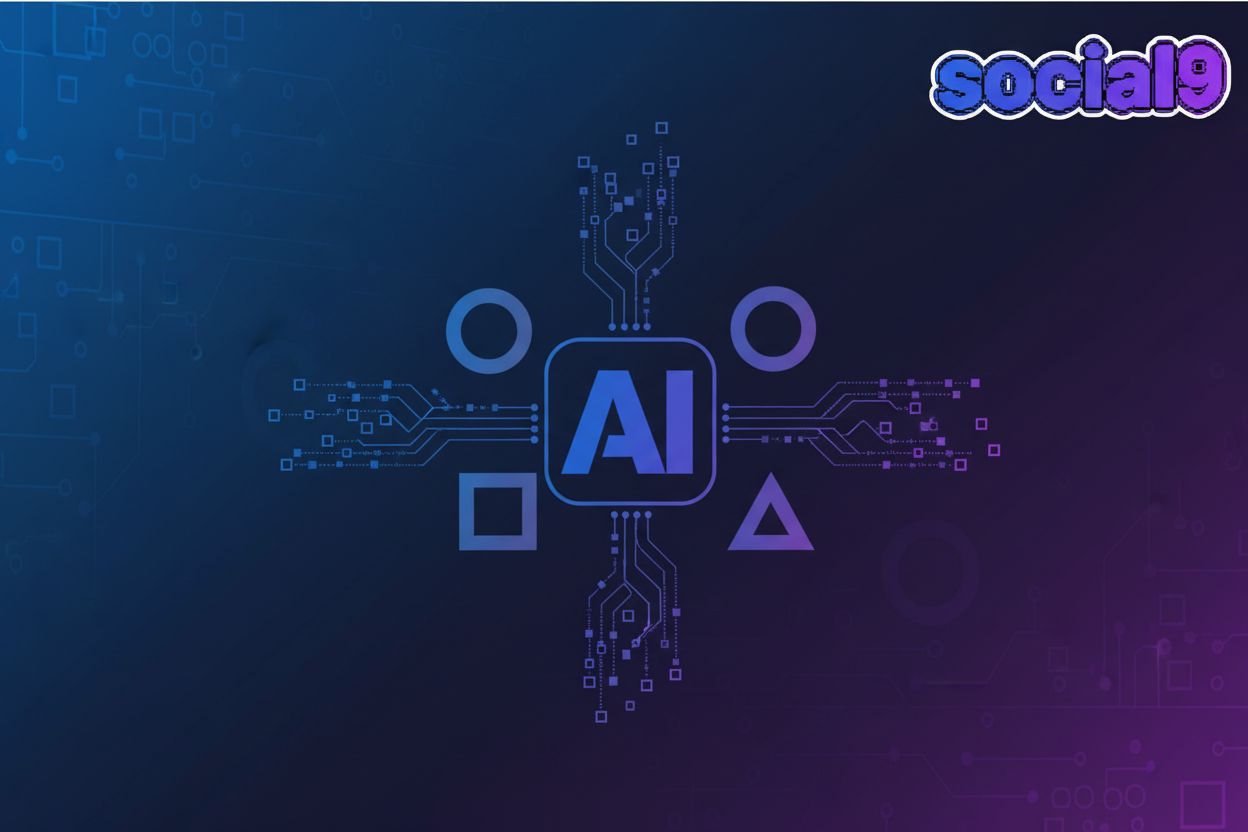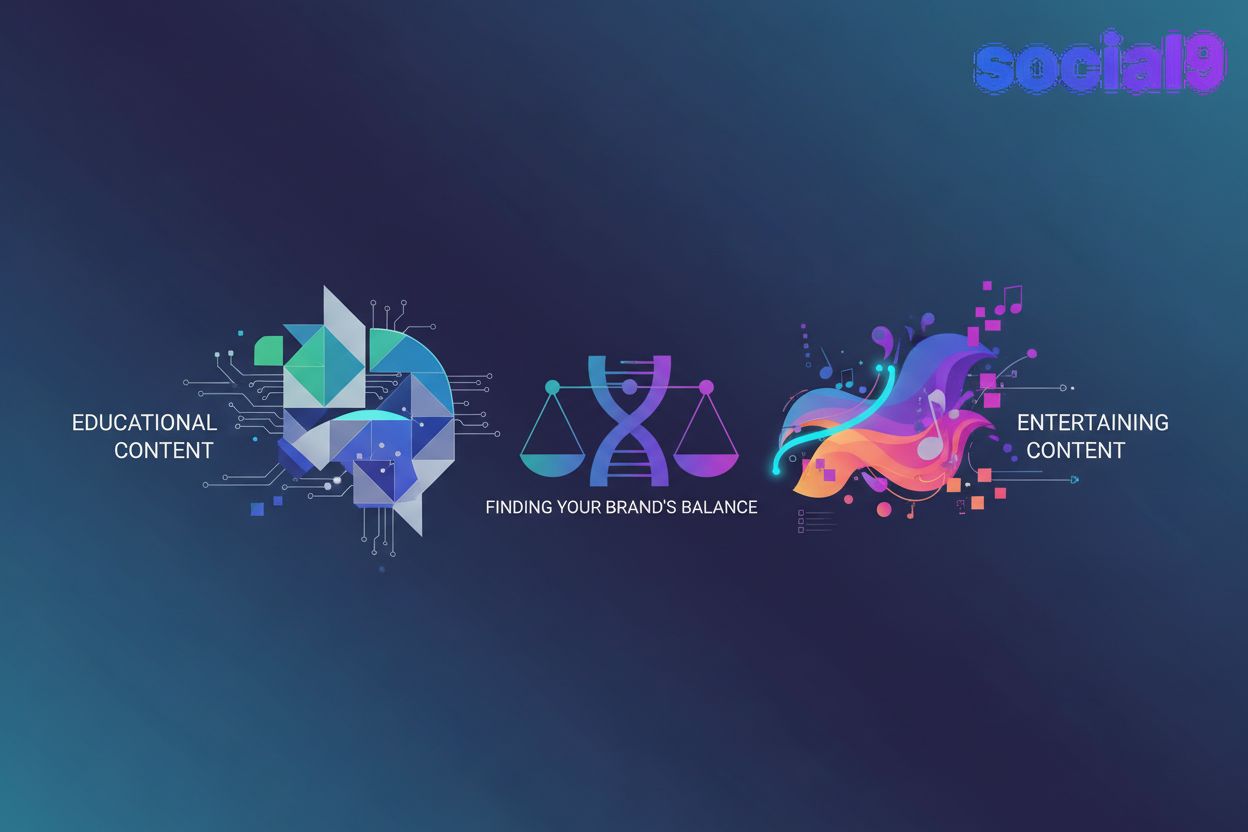Level Up Your Content: How Reinforcement Learning Optimizes Your Strategy
Introduction: The Next Frontier in Content Strategy
Content strategy is evolving, and artificial intelligence is leading the charge. Imagine if your content could learn and adapt in real time to maximize engagement and achieve your business goals.
Traditional content strategy relies on manual analysis, A/B testing, and metrics that don't always tell the whole story. Let's face it: sifting through analytics reports is time-consuming and prone to human bias. A/B testing, while useful, only provides limited insights into long-term content performance. Often, marketers focus on metrics like page views that don't directly translate into revenue or brand loyalty.
- Manual analysis: Requires countless hours to identify trends, and results are prone to human interpretation and bias.
- A/B testing limitations: Provides limited insights into long-term performance and doesn't account for evolving audience preferences.
- Misaligned metrics: Traditional metrics, like page views, don't always align with key business objectives.
Reinforcement learning (RL) offers a new approach by allowing content strategies to learn through trial and error. RL algorithms adapt to real-time feedback and can optimize for complex, long-term goals. The best part? RL automates many aspects of content strategy, freeing up human strategists to focus on creativity and big-picture planning.
- Trial-and-error learning: RL algorithms learn from each interaction, constantly refining their approach based on feedback.
- Long-term optimization: RL can optimize for complex goals, like increased customer lifetime value, not just short-term gains.
- Automation: RL automates content strategy, which allows content creators to focus on other tasks.
According to Amazon Web Services (AWS) What is Reinforcement Learning?, RL excels in complex environments and requires less human interaction than traditional machine learning algorithms.
As we delve deeper, you'll discover how reinforcement learning can revolutionize your content strategy, making it more effective and efficient. The next section explores the limitations of traditional content strategy in greater detail.
Limitations of Traditional Content Strategy
Let's be honest, traditional content strategy has its limits. While it's gotten us this far, it often falls short in today's fast-paced digital landscape.
- Manual analysis is a grind: Spending hours poring over spreadsheets and reports to find patterns is exhausting. Plus, our own biases can easily creep in, skewing our interpretations. We might think a certain topic is hot, but is it really?
- A/B testing is a snapshot, not a movie: Sure, A/B testing tells us what works right now for a specific variation. But it doesn't really give us a clue about how that content will perform weeks or months down the line, or how it fits into the bigger picture of a user's journey. Audience preferences change, and A/B tests often don't capture that evolution.
- Metrics that don't pay the bills: We get excited about page views and social shares, but do those numbers actually translate into revenue or build lasting brand loyalty? Often, the metrics we track are vanity metrics that don't directly connect to our core business goals. It's like measuring how fast a car is going without knowing if it's heading in the right direction.
Reinforcement learning, on the other hand, offers a way for our content to learn and adapt on its own, optimizing for those crucial long-term goals.
Understanding Reinforcement Learning for Content
Imagine training a puppy: you reward good behavior and discourage unwanted actions. Reinforcement learning works similarly, but with content.
At the heart of reinforcement learning are five key concepts: agents, environments, actions, rewards, and states. Think of these as the building blocks of a content strategy powered by ai.
- Agent: This is the ai algorithm that makes content decisions. The agent analyzes data and chooses the best actions to maximize engagement. For example, an agent might decide which headline to use for a blog post or when to schedule a social media update.
- Environment: This is the platform where the content lives, such as a social media platform or a website. The environment provides feedback to the agent based on how users interact with the content.
- Actions: These are the content-related decisions the agent can make. Actions could include creating content, scheduling posts, or promoting content through ads.
- Rewards: These are the metrics that measure the success of the agent's actions. Rewards can include engagement metrics like likes, shares, comments, or click-through rates (CTR).
- States: These represent the current situation, including user demographics, trending topics, and content performance history. States help the agent make informed decisions based on the context.
Reinforcement learning algorithms learn through a process of exploration and exploitation. Balancing these two is key to optimizing your content strategy.
- Exploration: This involves trying new content strategies to discover what works. The agent experiments with different formats, topics, and styles to see what resonates with the audience. Think of it as A/B testing on steroids.
- Exploitation: This means leveraging existing successful strategies to maximize rewards. The agent focuses on the content types and approaches that have already proven to be effective.
- Balancing exploration and exploitation is crucial for optimal learning. Too much exploration can lead to wasted effort, while too much exploitation can result in stagnation.
Understanding these core concepts sets the stage for how reinforcement learning can be applied in practice.
Unlocking Content Creation Superpowers with Social9
Ready to transform your content creation process? Social9 provides the tools to help you create content that resonates and drives results.
Social9's ai algorithms generate high-quality content tailored to your brand. This means you can produce engaging posts that align with your brand's voice and style.
- Overcome writer's block and produce a consistent stream of engaging posts. The ai assistant helps spark ideas and create compelling narratives.
- Save time and resources on content creation. Automating content creation frees up your team to focus on strategy and other important tasks. For instance, a small marketing team can maintain an active social media presence without needing to hire additional staff.
Crafting the perfect caption is essential for capturing attention and boosting engagement. Social9 helps you refine your messaging and expand your reach.
- Craft compelling captions that capture attention and drive engagement. The ai analyzes your content and suggests captions that resonate with your target audience.
- Discover relevant hashtags to expand your audience and increase visibility. By using optimized hashtags, your content can reach more people interested in your niche.
- Optimize your content for maximum impact. Social9 ensures your posts are not only engaging but also discoverable.
With Social9, you're never alone. The platform provides a wealth of resources to support your content creation journey.
- Access a library of professionally designed content templates for various platforms. These templates save time and ensure your content looks polished and professional.
- Get expert assistance and guidance from Social9's dedicated support team. Whether you have questions about the platform or need help with your content strategy, the support team is there to assist.
- Unlock your content creation potential with Social9's comprehensive suite of tools. From content generation to analytics, Social9 equips you with everything you need to succeed.
Social9 leverages the principles of reinforcement learning to continuously learn what content resonates best with your audience, optimizing for engagement and driving better results. By analyzing user interactions and feedback, Social9's ai can refine its content suggestions and posting strategies, much like an RL agent learns through trial and error to achieve its goals.
Practical Applications of Reinforcement Learning in Content Strategy
Did you know reinforcement learning can fine-tune your content strategy for optimal results? Let's explore how this technology works in practice.
Imagine your content being delivered to your audience precisely when they're most receptive. Reinforcement learning makes this a reality by analyzing user behavior patterns to determine optimal posting times.
- RL algorithms can identify when your audience is most active on different platforms. This ensures your content appears at the top of their feeds, maximizing visibility.
- Personalized scheduling goes a step further by tailoring posting times to specific audience segments. This accounts for different time zones, demographics, and online habits.
- By strategically timing your content, you enhance visibility and skyrocket engagement. This leads to more likes, shares, comments, and overall impact.
What if every user saw content perfectly tailored to their interests? Reinforcement learning can learn user preferences and recommend relevant content.
- RL algorithms analyze user behavior, such as past interactions, browsing history, and demographics, to understand their preferences. This helps in delivering content that resonates with each individual.
- Personalized content feeds lead to higher click-through rates and conversions. Users are more likely to engage with content that aligns with their interests, increasing the chances of achieving your content goals.
- By delivering relevant content, you create a more engaging and satisfying user experience. This fosters customer loyalty and encourages repeat visits to your platforms.
Tired of guessing which ad copy will perform best? Reinforcement learning can help you create data-driven ad copy that resonates with your target audience.
- RL algorithms test different ad copy variations and optimize for conversions. They analyze metrics like click-through rates, conversion rates, and cost per acquisition to identify the most effective messaging.
- Data-driven ad copy ensures your ads are tailored to the specific needs and interests of your target audience. This increases the likelihood of capturing their attention and driving conversions.
- By optimizing your ad copy with RL, you can improve the return on investment of your advertising campaigns. This leads to more efficient ad spending and greater overall profitability.
Ready to see how reinforcement learning can revolutionize your content creation process? The next section explores how RL helps create engaging content.
Implementing Reinforcement Learning: A Step-by-Step Guide
Ready to take your content strategy to the next level? Implementing reinforcement learning might seem daunting, but breaking it down into manageable steps makes it achievable.
First, it's essential to clearly define your content strategy goals. What do you want to achieve? Is it increased brand awareness, lead generation, or boosting sales?
- Clearly defining goals helps in aligning your RL model with your business objectives. For instance, a healthcare provider might aim to increase patient engagement with health tips, while a retail company may focus on driving online sales through personalized product recommendations.
- Identify key metrics to measure success. These could include engagement rate, click-through rate (CTR), conversion rate, or customer lifetime value.
- Metrics provide quantifiable feedback for your RL model, ensuring it optimizes for meaningful outcomes. A financial institution, for example, might track the number of new accounts opened through content marketing efforts.
Next, select an RL algorithm that aligns with your content strategy goals and data availability.
- Consider using open-source RL frameworks like TensorFlow or PyTorch. These frameworks provide the tools and resources needed to build and train RL models.
- Evaluate Model-free RL or Model-based RL. Model-free RL learns directly from experience without creating an internal model, while model-based RL builds a model of the environment to make decisions.
- The choice depends on the complexity of your environment and the amount of data available. For example, model-free RL might be suitable for a dynamic social media platform, while model-based RL could work well for a more predictable email marketing campaign.
Now it's time to train your RL model with historical content data and user engagement metrics.
- Continuously evaluate your model's performance and make adjustments as needed. This iterative process ensures the model adapts to changing user preferences and content trends.
- Monitor for bias and ensure ethical considerations. Algorithmic bias can lead to unfair or discriminatory outcomes, so it's crucial to implement safeguards.
- Regularly assess the model's fairness and transparency to maintain user trust and brand reputation.
Implementing reinforcement learning requires a structured approach and continuous refinement.
Challenges and Considerations
Implementing reinforcement learning in content strategy isn't without its hurdles. Let's look at some challenges and important things to keep in mind.
RL models thrive on data, but they can be data hungry. To train effectively, these models need vast amounts of information.
- This includes historical content performance, user engagement metrics, and audience demographics. Without sufficient data, the RL agent might make suboptimal decisions, hindering its ability to improve content strategies.
- Training RL models also requires significant computational power. The algorithms often involve complex calculations and simulations, demanding robust hardware and software infrastructure.
- Consider cloud-based solutions for scalable computing. Services like Amazon Web Services (AWS) provide the necessary resources to handle the computational demands of RL training. For instance, services like AWS SageMaker can streamline the process of building, training, and deploying machine learning models, including those for RL.
The reward function is the compass that guides the RL agent. A well-designed reward function is crucial for steering the agent toward desired outcomes.
- For instance, if the goal is to increase user engagement, the reward function might assign higher values to metrics like shares, comments, and click-through rates (CTR). The agent then learns to prioritize actions that maximize these rewards.
- To boost lead generation, a reward function could be designed to give points for form submissions or demo requests originating from content.
- For customer lifetime value, rewards might be tied to repeat purchases or subscription renewals influenced by content.
- Poorly designed reward functions can lead to unintended consequences. If the reward function only focuses on clicks, the agent might create clickbait content that doesn't provide real value to users.
- Carefully consider the trade-offs between different reward metrics. Balancing short-term gains with long-term objectives is key to achieving sustainable success.
RL models learn from existing data, which can perpetuate existing biases. It's important to address ethical considerations and implement bias mitigation strategies.
- For example, if the training data primarily reflects the preferences of a specific demographic, the RL agent might unfairly favor content that appeals to that group, neglecting other audiences.
- Implement bias detection and mitigation strategies. This includes carefully examining the training data for potential biases and using techniques like re-weighting or data augmentation to address imbalances. Re-weighting involves adjusting the importance of certain data points, while data augmentation creates new, synthetic data points to balance out underrepresented groups.
- Ensure transparency and accountability in your RL-powered content strategy. Regularly audit the model's decisions to identify and correct any unintended biases or ethical concerns.
Addressing these challenges ensures that reinforcement learning enhances, rather than hinders, your content strategy.
The Future of Content Strategy: AI-Powered Optimization
The world of content strategy is on the cusp of a seismic shift. Are you ready to embrace the ai revolution and unlock unprecedented levels of optimization?
Meta-learning allows RL models to adapt quickly to new content platforms and audience segments. For example, a meta-learning algorithm could help a financial services company tailor its content strategy for different social media platforms, saving time and resources. It's like teaching the ai to learn how to learn, so it can pick up new skills much faster.
Multi-agent RL facilitates collaborative content creation by coordinating multiple ai agents. Imagine multiple agents working together to generate different parts of digital marketing campaigns, ensuring a cohesive and engaging narrative. One agent might focus on writing blog posts, another on social media snippets, and a third on email subject lines, all working in sync.
Explainable AI (XAI) improves understanding of RL-driven content decisions, offering insights into why certain strategies work. This transparency helps content creators trust and refine ai recommendations. Instead of a black box, you get a clearer picture of the ai's reasoning.
ai will automate many routine aspects of content strategy, which allows human strategists to focus on more creative and strategic tasks. For example, ai could handle tasks like scheduling posts, optimizing headlines, and identifying trending topics, freeing up marketers to focus on content quality and campaign strategy.
ai will allow hyper-personalization of content experiences, which will lead to higher engagement and conversion rates. By analyzing user data and preferences, ai can deliver content that resonates with each individual, regardless of scale. Think of a personalized product recommendation engine that learns your style and suggests items you'll actually love.
Content strategy will become more data-driven and results-oriented, which will lead to greater accountability and roi. With ai-powered analytics, content creators can track the performance of their content in real time and make data-driven decisions to optimize their strategy.
Reinforcement learning is a powerful tool for optimizing content strategy and can take your content to the next level.
Embrace ai-powered solutions to stay ahead of the curve and unlock the full potential of your content with data-driven insights and automation.
As you integrate RL into your content strategy, remember to address the challenges and ethical considerations to ensure responsible and effective implementation.






